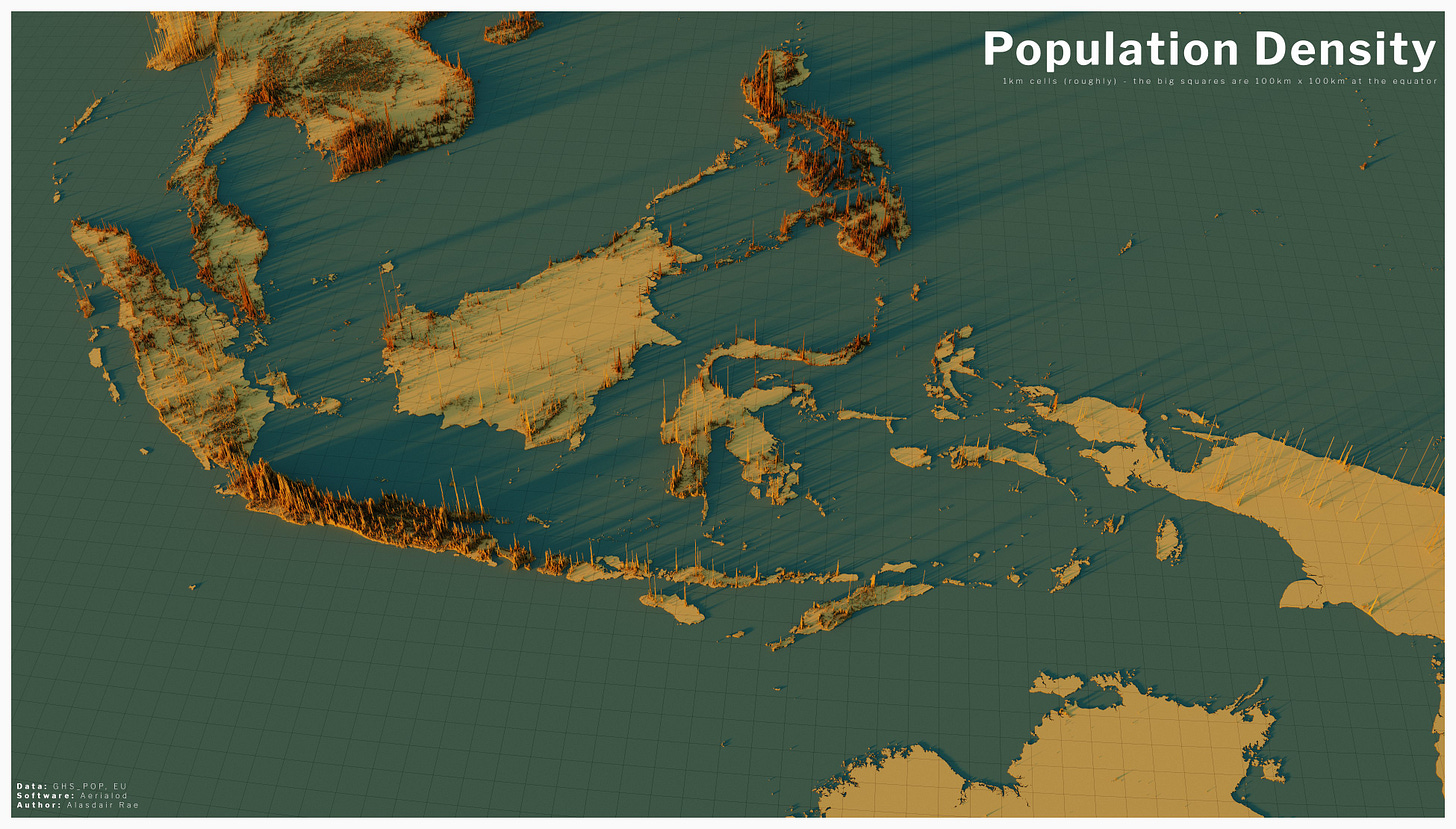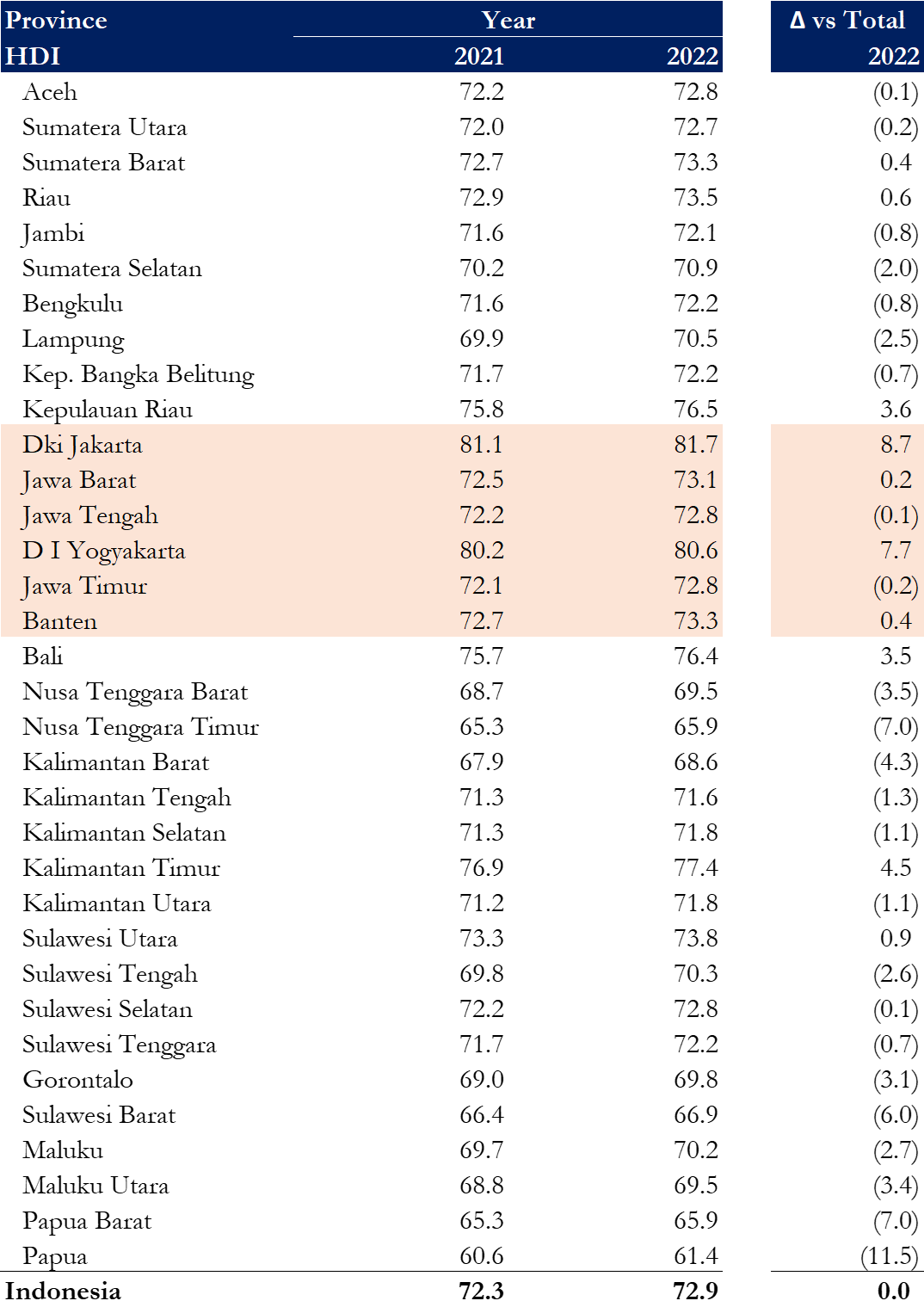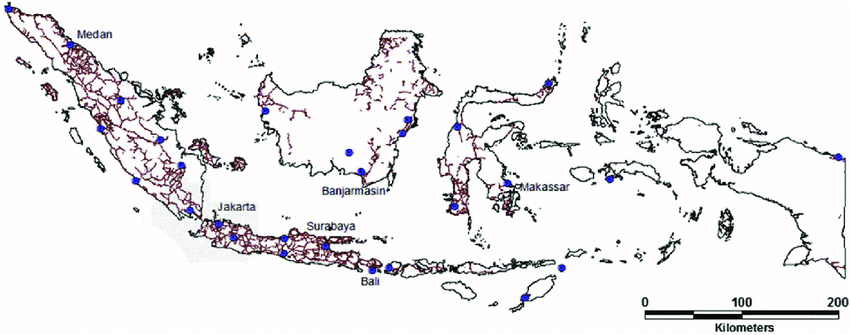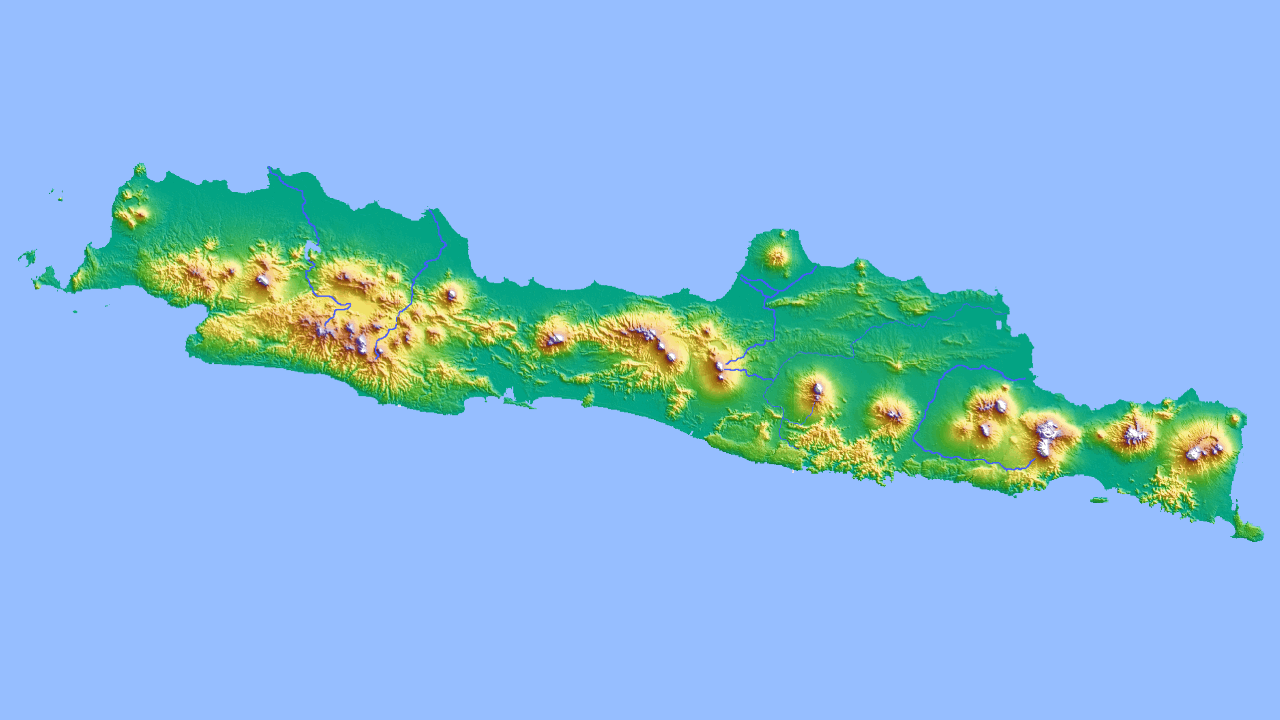Java Centricism

Introduction
Wrapping up the Indonesia Cultural Insights series, this chapter will explore Java Centricism. By utilizing an interdisciplinary approach, I will explain how & why Java exudes an outsized influence on Indonesia.
Population Density
One explanation for why Java is so powerful is population density (on an aggregate and on a relative basis). Tomas Pueyo, for example, traces numerous historic factors (empires, trading routes, colonial impacts, and regional population growth) settling on the view that Javanese topology contributed to its astronomical rise. The natural extension of the argument being that the large population drives Javanese dominance.
However, taken in isolation, Javanese population density is insufficient. A large population does not necessarily translate to a dominant one. Within a country, dominant minorities are not unheard of. Zooming out, countries with a relatively small percentage of the world’s total population have been able to dominate: take the the UK (in the 1800s) or the US/Russia (in the 1900s) for example.
A more compelling reason that Java has dominated Indonesia, in my view, is economic dominance.
Java

The table above details GDP by Province measured on a 2010 constant basis. I’ve highlighted Javanese provinces to demonstrate just how outsized they are. Beyond accounting for over 57% of the Indonesian economy in 2010, Java has grown on a relative basis compared to the Indonesian total by over 2% in the last 12 years. Comprising nearly 60% of the economy, Java is the financial capital of the country.
The natural counterargument to the view that Java dominates on an economic basis would be to claim that things differ on a weighted basis. However, Java pulls ahead from a human development perspective - which factors for lifespan, education levels, and GDP per capita - with Jakarta and Yogyakarta standing out significantly. The chart below summarizes these findings.

Urbanization

While the GDP & HDI numbers demonstrate how strong Java is, the numbers shouldn’t be taken in isolation. Increased economic activity has come as a consequence of urbanization. From 2011 to 2021, for example, Indonesia has become ~7% more urbanized. To put this into context, more than 32 million people have moved into cities since 2011. This implies that ~155 million people now live in urban environments.
The data goes on for 94 different cities, but the chart above summarizes the top 10 largest cities sorted by GDP due to Indonesia’s fat head and long tail nature. As one can see, the concentration in dollars and in population around large cities, specifically Jakarta, Surabaya, and Bandung, skew the data in favor of Java.
The two photos taken from Uncharted Territories demonstrates just how urbanized Java is.
Light Traffic Across Indonesia
Light Traffic versus Topography (Java)
Infrastructure
Underlying Javanese economic dominance is Javanese infrastructure. I was speaking with Professor Tyler Cowen (I highly recommend reading his blog, linked) the other day about Indonesia and one of the first things he pointed out was the remarkable interconnectedness that the island had. Compared with a rural area in India that may not have access to a sprawling network of highways and electrical access, Java boasts a high degree of infrastructure development. The picture below demonstrates the road network on the island.

The conversation with Tyler had me thinking about a chat I had with the head of one of the largest conglomerates in Indonesia. One of the points he brought up was that Jokowi’s administration had built more roads than in the history of modern Indonesia. The infrastructure development is shocking due to its scale and its impact. While there have been drives to diversify investment across the Indonesian islands, concentration in Java - as stands today - shows why Java still remains dominant.
MC’s Take:
My time in Jakarta was eye-opening in many ways. Beyond having the opportunity to meet many new people, I was able to lean-in by experiencing as well as contemplating some of the cultural insights I’ve shared in this series (City of Contrasts, Somewhere in the Middle, The Rise of the Middle Class).
Some things that didn’t quite make the cut for deeper inspection but warrant mention include:
How resourceful people were:
My Grab driver’s car broke down in the middle of the highway. In New York, that would’ve been devastating. In Jakarta, he simply called me another Grab to pick me up from the side of the highway!
How multicultural Jakarta was:
Beyond a mix of ethnicities and languages, Indonesia embodies Indo-Hindu/Buddhist as well as Islamic influences.
One particular idiosyncrasy I observed was that Muslim people in Jakarta celebrated Hari Raya via libation but observed strict Halal diets particularly concerning pork.
I think these observations, in general, show just how dynamic and multifaceted Indonesia really is.
One other area I’d like to call out was my opportunity to lean in to the music scene. I visited the studio of Harsya Wahono, artist and one of the founders of DIVISI62 in South Jakarta. Harsya introduced me to the spheres of Javanese influence and inspired this article. I would highly recommend listening to his music which incorporates Indonesian (gamelan) and global influences. My favorite track is Asmoro.






